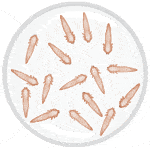Dry Eyes Treatment/Management
in Plano –North Dallas
Expert Eyelid surgery center in North Texas
What is Dry Eye Condition?
Dry Eye Disease is a condition where meibomian gland dysfunction (MGD) occurs. The Meibomian glands are inflamed, blocked or atrophied. It results in a destabilization of tear film and results in evaporation of aqueous layer. This evaporation exposes the cornea to pathogens, dehydration which leads to more inflammation. Some other risk factors can include, immune or hormonal imbalances, environmental conditions, skin pathologies and poor hygiene.
Dry Eye Condition severely impairs the quality of life. Symptoms include pain, blurry vision, foreign body sensation, watery eyes.
Dr. Priya Kalyam is an expert in Dry Eye Treatments in North Texas area. Dr. Kalyam went through an intensive and specialized training that helps her quickly identify the condition with a focus on the eyelid health.
Key Facts about Dry Eye Condition
- The prevalence of DED symptoms ranges from 5% to 50% (1)
- 25% of Dry Eye Disease sufferers in the United States are undiagnosed (2)
- Women are twice as likely as men to have Dry Eye Disease (3)
- Refractive Surgery can trigger and aggravate Dry Eye Disease (4,5)
- 85% of Dry Eye Disease patients have signs of MGD (7)
- 80% of Skin Rosacea patients show signs of MGD (8)
Causes of Dry Eye Condition
Dry Eyes can often result from aging as well as other medical conditions. One of the major one being Rosacea. Rosacea is a major contributor to MGD (meibomian gland dysfunction) and Dry Eye Disease.9 In Rosacea, a) abnormal blood vessels release pro-inflammatory mediators, which propagate to eyelids via orbital blood vessels b) parasites called demodex play a major role in eyelid inflammation. These parasites thrive on skin affected with Rosacea. This bacteria causes thick meibum blocking meibomain glands. Result is MGD causing tear film instability and inflammation of ocular surface.
Congenital Ptosis: This is caused by weakness in natural levator muscle weakness. This is typically present since birth and can be a result of poor development of upper eyelid muscles.
Dry Eye Treatment-Management Using IPL
Optima IPL - think outside the eye (animation)
Dry Eye Treatment with M22 IPL (Intense Pulsed Light) Therapy
IPL therapy uses intense pulses over a 400nm to 1200nm wavelength. IPL treatment targets abnormal blood vessels in the eyelids and eye area. This technology is specifically tailored for treating Dry Eye Disease due to MGD (Meibomian Gland Dysfunction)
PL is proven in Clinical Research and data shows:
- IPL destroys the inflammation causing abnormal blood vessels
- IPL restores the Meibomian gland’s functionality (MGD)
- IPL decreases the bacteria stimulating the infection leading to MG

Reduces inflammatory mediators

Alleviates Abnormal Blood vessels

Decreases Demodex
Picture Credit Lumenis
REFERENCES
- Stapleton F, Alves M, Bunya V, et al. TFOS DEWS II Epidemiology Report. Ocul Surf. 2017;15(3):334-65
- Farrand K, Fridman M, Stillman I, Schaumberg D. Prevalence of diagnosed Dry Eye Disease in the United States among adults aged 18 years and older. Am J Ophthalmol.. 2017;182:90-8
- Sullivan D, Rocha E, Aragona P, et al. TFOS DEWS II Sex, Gender, and Hormones Report. Ocul Surf.. 2017;15(3):284-333
- De Paiva C, Chen Z, Koch D, et al. The incidence and risk factors for developing dry eye after myopic LASIK. Am J Ophthalmol. 2006;141(3):438-45
- Solomon R, Donnenfeld E, Perry H. The effects of LASIK on the ocular surface. Ocul. Surf. 2004;2(1):34-44
- Shtein R. Post-LASIK dry eye. Expert Rev Ophthalmol. 2011;6(5):575-82
- Lemp M, Crews L, Bron A, Foulks G, Sullivan B. Distribution of aqueous-deficient and evaporative dry eye in a clinic-based patient cohort. Cornea. 2012;27:472-8
- www.dryeye.lumenis.eu
- Viso, E, Rodríguez-Ares M, D, Oubiña B, Gude F. Prevalence of asymptomatic and symptomatic meibomian gland dysfunction in the general population of Spain. IOVS. 2012;53(6):2601-

